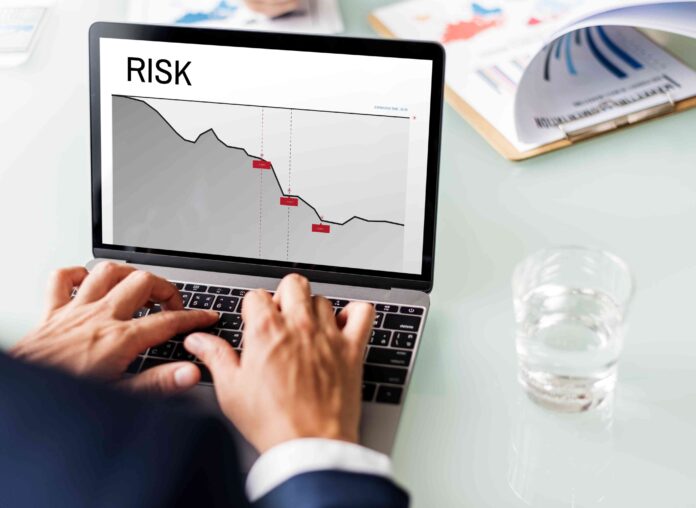Proactive AML risk management solutions have become critical for financial institutions as the threat of money laundering continues to rise. The global anti-money laundering (AML) software market has experienced significant growth, which reflects the increasing demand for more advanced implements to mitigate financial risks. In 2016, the market size stood at $690 million, growing to $867 million in 2017. By 2023, the market is projected to reach an impressive $1.77 billion, which emphasizes the importance of AML strategies. These mitigating solutions assist in regulating legislation and intensifying compliance measures.
What is AML Risk Management?
AML Risk Management refers to the processes and strategies that financial institutions implement to detect, monitor, and mitigate money laundering and financial crimes. These procedures are designed to protect fraudsters from showing illegal money as the authentic ones posing a severe threat to global economies.
The importance of an effective AML risk management system cannot be amplified. Beyond the legal implications, failing to address these risks can harm a company’s reputation, invite penalties, and even lead to business closures.
Key Elements of AML Risk Management
Several key elements play a significant role in building a strong AML risk management framework:
Risk-Based Approach
The foundation of AML risk management is a risk-based approach. Institutions must allocate resources based on the level of risk they face from potential money laundering activities. This means performing a thorough AML risk assessment to identify and rank potential risks by severity, ensuring that resources are concentrated where they are most needed.
In addition to customer risk profiles, institutions must also consider factors such as geography, the products and services offered, and the methods of delivery. An effective risk-based approach ensures a targeted and efficient allocation of AML resources.
AML Risk Scoring
It is another requisite of effective risk management. It involves assigning a score to customers and transactions based on the level of financial risk they present. Factors such as financial history, geographic positioning, and the type of services used help in determining the risk score.
The AML risk scoring model enables institutions to identify high-risk customers and flag unusual activity for further investigation. This automated process helps to streamline risk management efforts and ensures that no potential threat goes unnoticed.
Continuous Monitoring and Reporting
Monitoring customer activities on an ongoing basis is crucial for identifying new risks as they emerge. Financial institutions must ensure that their AML risk management systems are capable of real-time monitoring, allowing for instant flagging of suspicious transactions.
Conducting an Effective AML Risk Assessment - Potential Advantages
An AML risk assessment involves a full evaluation of potential risks confronted by an establishment. The purpose is to discern areas where the institution may be exposed to money laundering operations and to develop strategies for alleviating these menaces.
Here are the key steps to performing an AML risk assessment:
1. Address Risks
The initial phase in performing an AML risk assessment is detecting customer behavior, transactions, and service risks. Institutions should consider risks associated with the types of products and services offered, the geographical regions they operate in, and the profiles of their customers. For instance, institutions serving high-risk sectors such as gambling or cryptocurrency require heightened scrutiny.
2. Evaluate and Prioritize Risks
After sleuthing potential threats, the subsequent step is to scrutinize their severity and highlight them based on the level of financial risk they present. This process typically involves assigning scores based on factors such as transaction size, volume, and customer history. AML risk scoring helps institutions concentrate their resources on the highest risks, ensuring that they are adequately addressed.
3. Implement Risk Mitigation Strategies
Once the risks have been prioritized, institutions must develop strategies to mitigate them. These strategies could involve additional customer due diligence for high-risk clients, enhancing transaction monitoring processes, or adopting advanced technological solutions such as AI-driven monitoring systems.
4. Regular Check and Modification
AML risk management is not a one-time activity. Institutions must ensure that they regularly review and adjust their risk management policies to reflect new threats and regulatory updates.
Financial Risk and Global Impact
Failing to implement proper AML risk management has far-reaching consequences, affecting both the financial institution and the global economy. Money laundering facilitates illicit activities such as terrorism, drug trafficking, and corruption, leading to increased instability and undermining the credibility of financial systems.
Beyond individual institutions, inadequate AML compliance can have flow-on effects across the integral banking network. Banks, insurance companies, and investment firms must collaborate to create a robust global network of AML compliance measures that prevent financial risk on a larger scale.
Future of AML Risk Management: Final Words
The future of AML risk management lies in adopting a proactive approach to identifying and mitigating risks. Financial institutions must continue investing in technological innovations, strengthening their AML compliance frameworks, and fostering a culture of vigilance across all levels of their organization.
